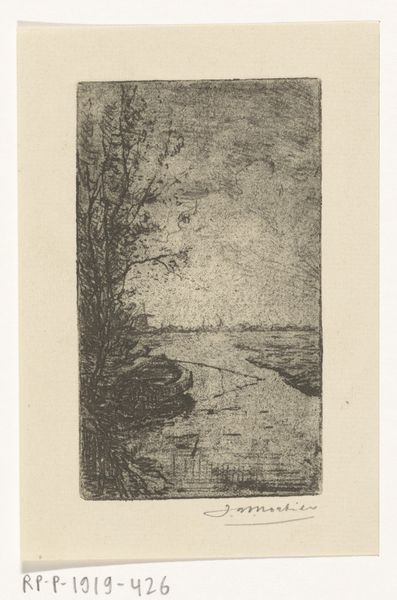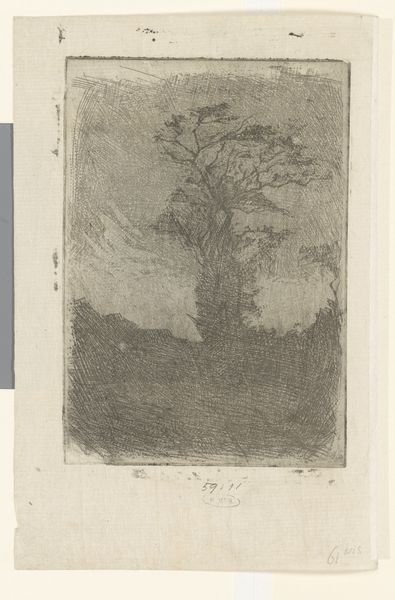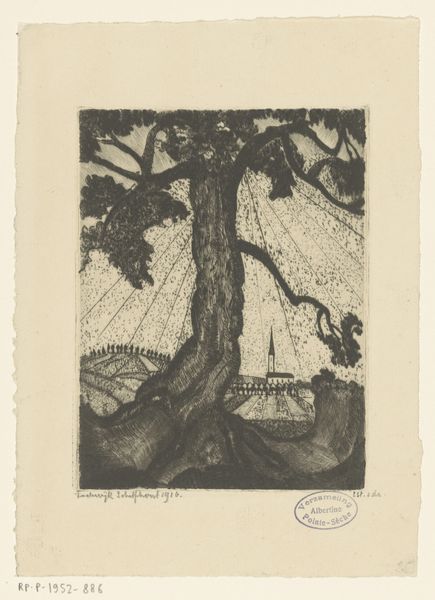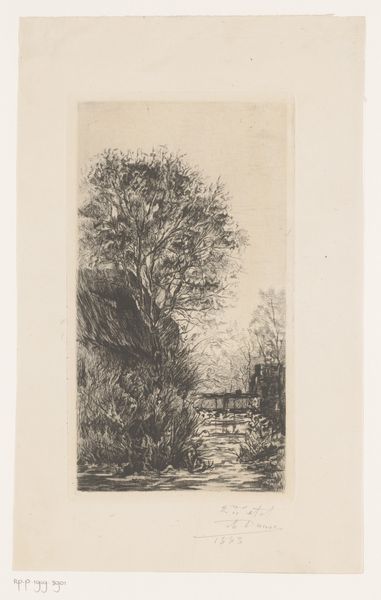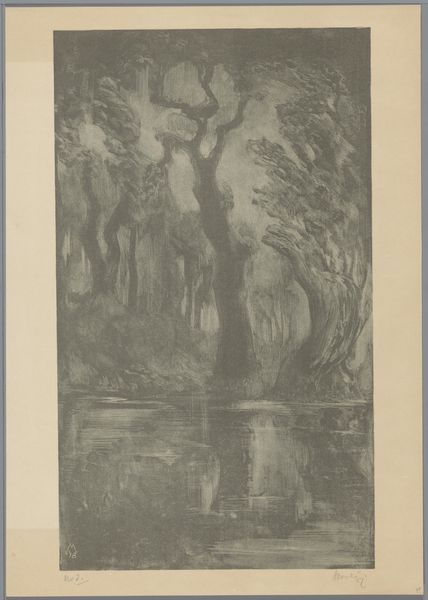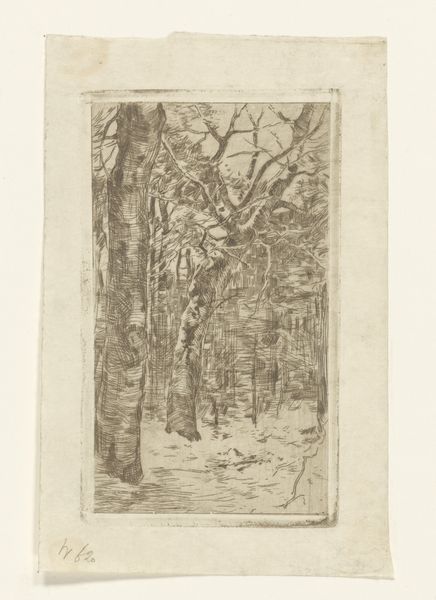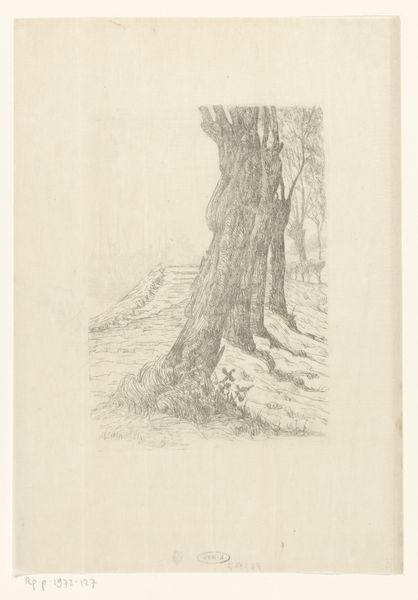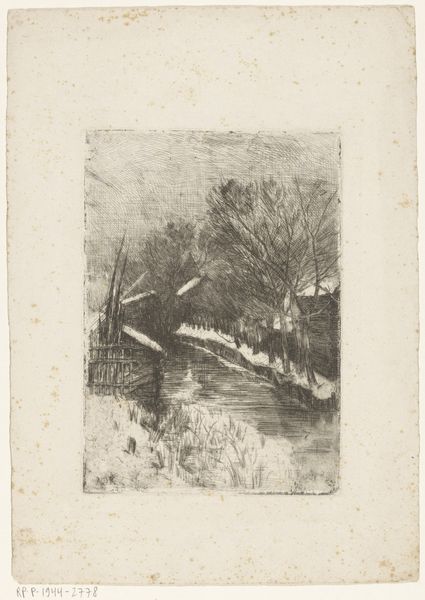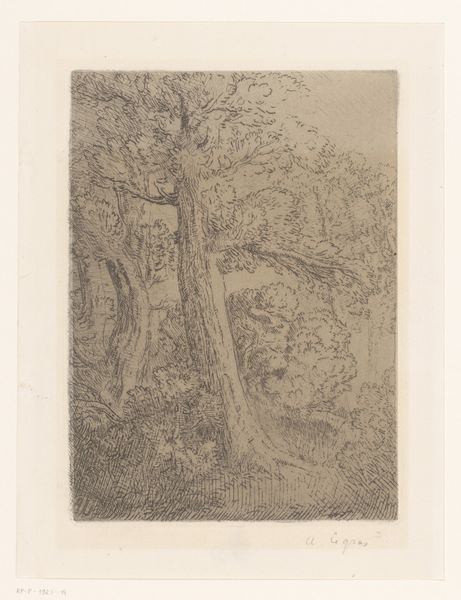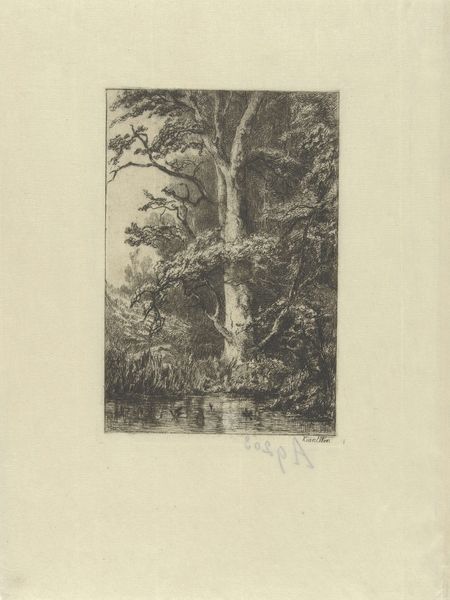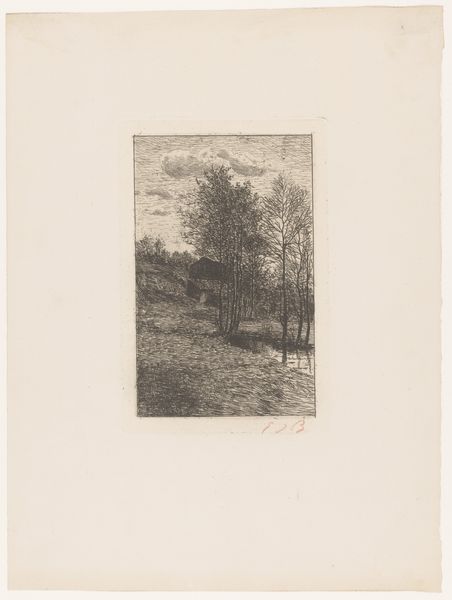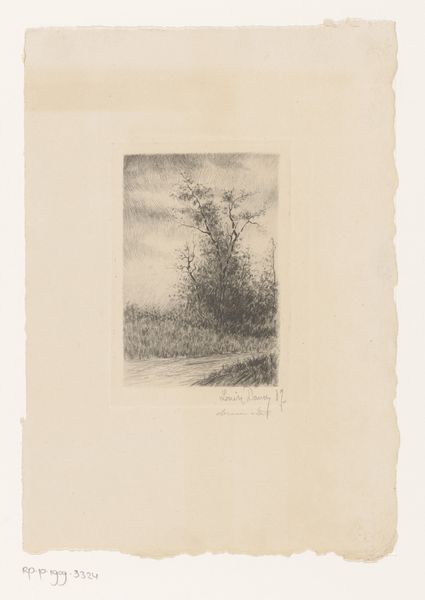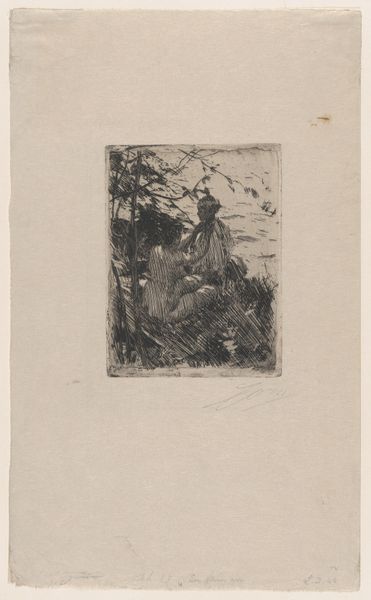
drawing, print, woodcut, graphite
#
drawing
#
art-nouveau
# print
#
landscape
#
woodcut
#
graphite
Dimensions: height 121 mm, width 79 mm
Copyright: Rijks Museum: Open Domain
Editor: This is Wijnand Otto Jan Nieuwenkamp’s "Ex libris van Anna Wilbrink," created in 1897. It's a woodcut drawing and print. The Art Nouveau style is evident, and the landscape imagery is quite striking. It has a serene, almost melancholic feel to me. What's your take on this piece? Curator: Well, immediately, what jumps out is the context of the bookplate itself. “Ex libris” denotes ownership, right? This print would have been pasted into the owner’s books. So, what does it mean to commission an artist to create a personalized mark of ownership? In an era grappling with rising literacy and mass production, this woodcut for Anna Wilbrink signifies a conscious assertion of individual identity through books, almost a private intellectual territory. Do you see the tension there, between the individual and the increasingly accessible world of literature? Editor: That's a great point; I hadn't considered the context of book ownership. The act of commissioning becomes a statement in itself. So the landscape isn't just decorative? Curator: Exactly! Consider the symbolism inherent in landscape art of the period. Trees often represented strength, resilience, connection to nature... Perhaps Wilbrink identified with these qualities, seeing her intellectual life rooted and flourishing like this tree. The Art Nouveau style, with its flowing lines, aimed to connect art with everyday life, blurring boundaries between high and low culture. The fact that this art is inside of a book connects art to something that could be widely used. Editor: So it elevates the act of reading and owning books to an aesthetic experience. Curator: Precisely! And the politics of imagery come into play: who had access to these commissioned works? It speaks to the privileged class's desire for self-expression and the unique blending of public art style with private consumption. It's a very intimate art piece that allows her to make an impact in her life. Editor: I've learned to look beyond the surface beauty and think about who this art was intended for, and what cultural values it was promoting. It makes me want to study social patterns within the Art Nouveau movement. Curator: Exactly. Art exists within – and shapes – historical narratives. Hopefully, this gives others reason to think more on the intersection of personal expression, book ownership, and larger cultural movement in this period.
Comments
No comments
Be the first to comment and join the conversation on the ultimate creative platform.

